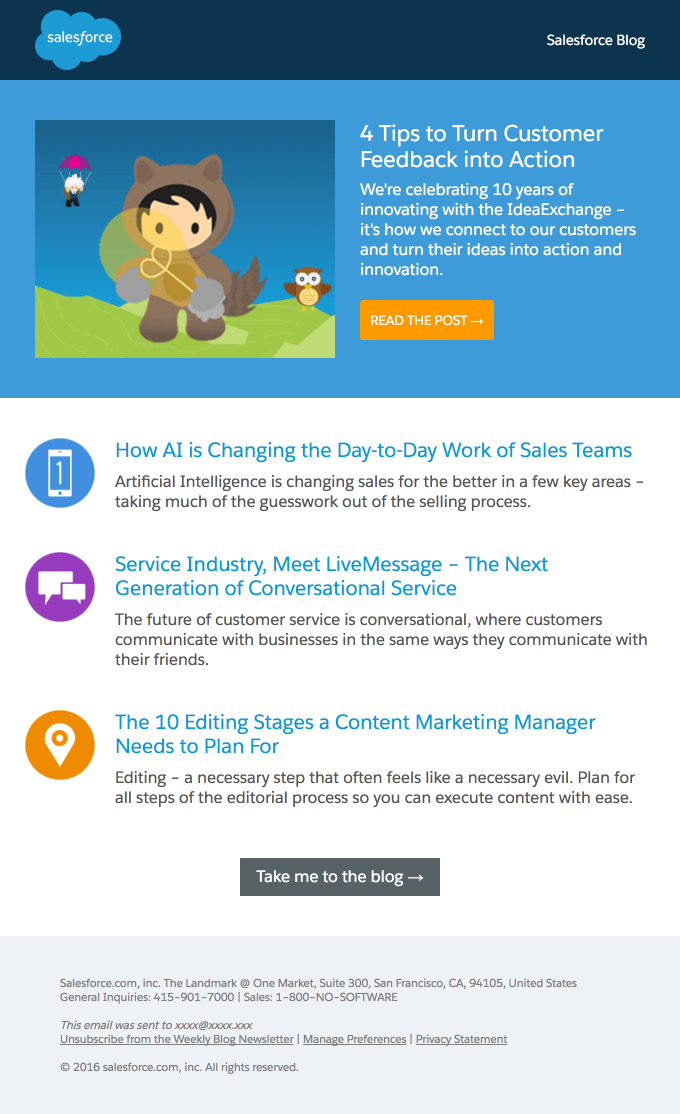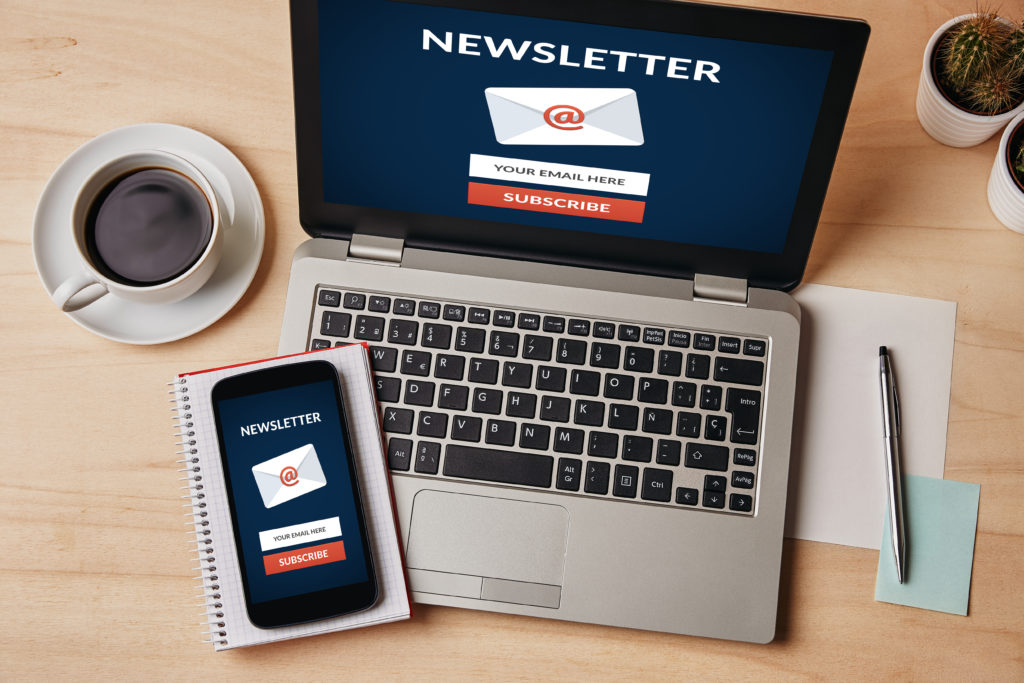I love newsletters, but I don’t see a lot of them these days. The thinking is that people don’t have the time to read them, but newsletters aren’t really long-form assets. They’re vehicles for multiple bits of content rather than a singular container of one big asset. Users can decide for themselves how much time to spend with them, and they can choose to engage with one or many smaller content assets within.
If you have your content set up on a buffet-style portal or even spread throughout your website, think of a newsletter as your sandwich board that lists highlighted specials and timely treats.
If you aren’t publishing newsletters, here are three reasons why you need to start:
Post-Purchase Engagement & Nurture
B2B marketing resources are mostly focused on moving prospects through the education, solution research and solution choice phases of the buying journey. Relatively few resources are focused on what happens after that, and unfortunately, this diminishes opportunities for upsell and cross-sell revenue as well as long-term loyalty. Goodbye higher-margin sales, and hello costly churn.
Research from Sirius Decisions sheds light on why this is: 70% of the metrics B2B leaders follow in their dashboards reflect internal goals, and only 30% align to customer goals.
Nonetheless, the pivot that’s been happening in the past five years to more customer-centric models will continue, because companies that are doing this are outperforming peers. So, if you aren’t covering the full customer lifecycle in marketing now, you’ll probably be asked to do so in the near future.
When this happens, take a look at existing newsletters that might already be pushed via product teams or others and assess where gaps exist for long-term nurturing of existing customers. Perhaps this will lead you to create a new newsletter or simply to revamp one that’s already being published.
Either way, newsletters are great for this portion of the customer lifecycle, because you already have an engaged audience that wants to hear from you and you’re making that engagement easy for them by consolidating relevant news into one place.
Here’s a good example from Salesforce:

An Always-Open Outbound Channel
Newsletters are versatile and generally follow a consistent publishing schedule—weekly, bi-monthly or monthly. Recipients come to expect them, and they recognize them immediately in their inboxes—two advantages that nurtures and other types of limited-timeline campaigns don’t have.
This puts a lot of power in a marketing team’s hands when they want to communicate with customers quickly, such as when something unexpected happens (i.e., a global pandemic) or when they want to align outbound communication to a timed event (i.e., webinar or product/service release).
Because newsletters are scheduled in advance, they’re already in the outbound email rotation, so you don’t have to wait for an opening. They also are templated, which shortens the content-creation timeline because decisions regarding format, word count and other variables have already been made.
At the same time, because a newsletter is a known entity among your audience, you have the option of adding “special editions” when it makes sense. For instance, I could see a COVID-19-focused newsletter working well for industries and functions directly touched by the pandemic, such as telehealth and financial management. The Massachusetts Medical Society is doing this.

An Underused Content Channel
Even though newsletters provide a lot of advantages, they’ve suffered from a reputation as being old-fashioned and aren’t top of mind for most content marketing professionals. There’s more emphasis on shorter, single-topic formats such as infographics, blogs and short E-books.
To me, this makes newsletters even more beneficial because they will stand out as a different—maybe even throwback—form of engagement.
Using an interactive format platform like Ceros can add another differentiator, because designers can be so much more creative with interactive elements and really make the individual components of the newsletter stand out.
Another bonus with interactivity is that it provides back-end data that can tell you what your target audience is most interested in. This could be beneficial on several levels, including content planning or even new product/service development.
Say Yes to Newsletters
Are newsletters a lot of work? Yes and no. They do take planning and a steady stream of news and content to fill them, but once you get start with a schedule and an editorial calendar, the management of them becomes standardized and predictable.
Push yourself to try a few editions, maybe over one quarter, and monitor the results. Tweak and keep going. If after two quarters you aren’t seeing results, step back for a review of whether newsletters are right for your audience.
My guess is that more people will be surprised that they do work than those who find that they don’t.
Looking for more unexpected ways to connect with buyers? Read Tonya’s recent post discussing the idea of Slack and Teams as potential marketing channels.

As Vice President of Content Strategy & Services for Content4Demand, Tonya Vinas oversees the agency’s team of content strategists and works across content-creation and delivery functions to ensure on-point, quality content services. She has more than 20 years of experience in B2B content development and formerly worked as a business and news journalist. When she’s not driving marketers to push the content limits, she’s cooking, reading about global trends and the economy or taking a leisurely walk in the valley parks along Lake Erie.



